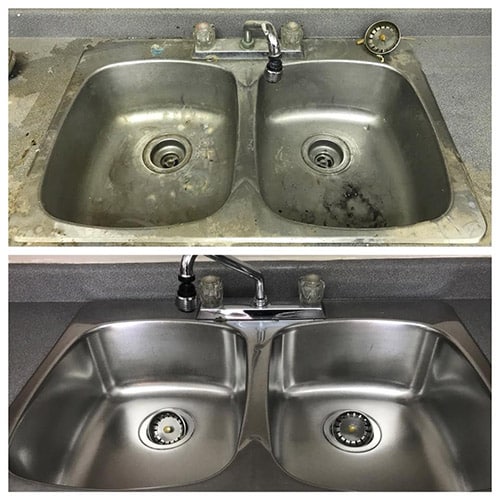Are you ready to begin freelancing? You have options. As a freelancer, you have complete control over the decisions that affect your business.
Customers actively seek novel solutions to their problems, and your freelance services could be the solution.
The steps discussed in this post will assist you in getting started as a freelancer. Spend as little time as possible planning. You must take action to make your freelance career a reality.
Learn how to become a freelancer in 2024.
Table of contents
Who Is A Freelancer?
A freelancer is a self-employed individual who works for one or more firms but is not a W-2 employee. Freelancers are free to accept work from as many companies as they like. Their job and workload are ultimately under their control.
Because they are officially contractors rather than employees, freelancers must pay self-employment taxes every quarter. They also do not have access to benefits such as employer-sponsored retirement plans or health insurance unless they are a W-2 employer at another company.
Most freelancers work in the creative industries, such as graphic design, copywriting, and photography. There are, nevertheless, several prospects for freelancers in service-based organizations. Contract workers are commonly assigned responsibilities such as consulting, translation, marketing, and social media management.
See also: 10 Best Freelance Platforms For Developers In 2024
How Does Freelancing Work?
Freelancers are often compensated per project. They may, for example, accept a certain number of projects per month and bill either by the project or by the time it takes them to complete it (i.e., an hourly or even daily rate).
Freelancers choose their work hours and must meet deadlines. For example, they may receive four projects from a client at the beginning of the month, each with a different deadline. Freelancers can work at any time and from any location and even freelance for extra money while working full-time.
The standard freelance procedure is as follows:
- For contract work, the freelancer contacts potential clients or the other way around.
- The independent contractor accepts jobs for a set rate (per project, per hour, etc.)
- The client compensates the freelancer for the service (taxes are not taken out of the paycheck; freelancers must pay quarterly taxes)
- A freelance career allows you to be flexible and hone your skills for a charge that you set. If a client refuses to pay you what you’re worth, you can deny their offer and go on to another.
Should I Become A Freelancer?
Like anything else, freelancing has advantages and disadvantages; nevertheless, in my opinion, the rewards outweigh the disadvantages.
Here are a few of my favorite aspects of being self-employed:
- There are always open positions. Every hour, dozens of new job postings are posted to freelance networks.
- You have complete control over your schedule, when, how much, and how you work. There is no need to beg for time off. You don’t need to get up in the morning if your concentration is at its peak late at night. Freelancing allows you to maximize your peak performance without being bound to the office for specified hours.
- You have a tremendous opportunity to learn. You can work on various projects with a wide range of clients and get experience that is difficult to obtain in a traditional office setting.
- There is an option to choose your coworkers. If this one isn’t going well, you can always locate another. Because you are afraid to leave your job, you do not have to continue working in a hazardous environment.
What are the disadvantages of becoming a freelancer?
Although there are numerous advantages to working as a freelancer, there are also disadvantages, such as:
- Routine and self-control are required. If you want to be a successful freelancer, you must be self-motivated. There is no one checking on your job. You are that boss. You must be critical of yourself.
- Jobs will not always be available. You will receive more project offers than you can handle, and there will be times when no one appears to be recruiting. To combat this, build a clientele before quitting your day job.
- Sometimes, you may have to work longer hours. There will be times when maintaining a consistent flow of work and cash necessitates working beyond your regular working hours. In some cases, you may find that you are working longer hours than you did when you had a traditional full-time job.
- It could be a long time before you get your first job. Don’t give up if you don’t find a freelancing job immediately. It typically takes three months to a year to create contacts and build a consistent clientele. However, your freelance business will take off like wildfire once you arrive.
See also: Freelancer.com Reviews 2024: Can I Really Make It Or Is It A Scam?
How To Become A Freelancer?
The following are the ten stages you can take to become successful as a freelancer:
1 Define your “why.”
Before anything else, every effective freelancer must establish their main goal. Spend some time thinking about why you want to be your boss. Your “why,” whether it’s to live a certain lifestyle or make more money, will keep you going in difficult times.
2 Establish timetables.
Set a deadline for each of your milestone objectives. Set a deadline for selecting your niche, obtaining your first client, and quitting your day job, for example.
Setting firm deadlines for yourself may help you better manage your responsibilities in general because freelancers must create and adhere to their schedules without supervision.
3 Locate a profitable niche
Many independent contractors begin by providing expertise gained from previous employment. It is a quick way to get your business off the ground. To increase your chances of success, look for a niche within your field.
For very little money, freelancers can advertise their services on various websites. Choose a subject that interests you and work hard to excel in it.
4 Gather everything you’ll need to get started.
To work independently in your chosen field, check with your county or city to see if you need to apply for any licenses or permissions or file any paperwork.
You should also develop a business plan that details your services, target market, and marketing strategy. Then, to promote your services, create a website and order business cards.
5 Establish your income goal.
Setting a financial goal is essential, even if earning a full-time wage may take some time. This can be accomplished by calculating three separate amounts:
The bare minimum wage is the money needed to cover food, rent, and other necessities.
This amount is required to fund extracurricular activities such as hobbies, entertainment, and recreation.
Wish list: This is the sum required to live comfortably, including funds for trips and other items on your wish list.
This exercise can help you figure out how much money you need to make to meet milestones and pay your bills. You’ll know you’ve made progress toward your ultimate goal when you reach a certain revenue level.
6 Monitor your spending.
As a freelancer, you will incur business costs that you would not as a full-time employee. Expenses include your laptop, smartphone, internet connection, and other paid business services.
Assume you have a separate home office in which you work. Then you can deduct a portion of your housing and utility costs as business expenses.
Making a list of current expenses may help you determine which are necessary for your freelance work. You will most likely increase your investments and expenses as your company grows. Keep your expenses low first, and focus on the income level you need to achieve to meet essential financial obligations.
7 Look for work
Indeed makes it easy to find freelance jobs online. By going to Indeed Job Search, typing “freelance” in front of the job title you’re looking for, and then entering your city or state, you can get a list of freelancing positions in your area.
You can also search by company, salary range, keywords, and other criteria. You can filter your results by the date of the job posting and remote positions, among many other options.
Join freelance websites.
8 Expand your network.
When you start your freelancing career, tell everyone you know about it. Don’t forget to tell them you’re ready to start immediately and ask for their assistance in spreading the word about you to anyone needing your services.
You establish yourself as their go-to professional and build your network by doing so.
9 Establish your brand.
Spend time refining your freelance image and promoting your brand through various channels. Your goal is to create a strong digital brand that is easy to remember and find.
In addition to creating a social media profile, consider participating in industry-specific forums. Inquiring and responding to questions is a great way to pique interest in your activity.
Using this highly targeted strategy, you can connect with potential customers who are already browsing websites relevant to your business line.
Another advantage of using online networking sites is that you can meet more people in the same time as you would if you were meeting in person. These online meetings can serve as a springboard for in-person meetings.
10 Seek out a mentor.
Finding an experienced professional to advise you as your freelance career develops can be extremely beneficial. You can present your business plan, website, and marketing strategy to potential mentors to show them that you are serious about your desire to succeed.
How Much Should A Freelancer Charge?
How do you set a price that the customer will accept and that will increase your income? The reality is much simpler than you might think.
One straightforward approach is the best way to determine your freelance rate.
The solution is to make it up!
Yes, create it! Make a price list for each client. There is no such thing as a formula, a set of guidelines, or an ideal method. Instead, I’ll go over a few factors to determine your pricing.
Although there are several factors to consider, it is critical to understand that there is no set formula or guidelines for pricing.
Criteria 1: Is this a client I’d like to work with?
Although it may appear to be a silly basis for pricing, it is one of the most important factors.
When a client enters the picture, you allow someone into your life. You will be working with and assisting them for the foreseeable future, if not years. As a result, how well you get along with a client is critical.
Criteria 2: What is the client’s expected price range?
Setting fees in accordance with the scope of the project appears morally and ethically. In reality, it is safer to charge based on the client’s budgetary assumptions.
If you can match your pricing to their anticipated spending, your income and your chances of winning the project will increase.
How to Calculate a Client’s Budget
We recommend using one of two simple methods to calculate the client’s budget.
1) When a client inquires about an assignment, I ask them questions.
Do you have a budget for this project, and if so, is it more than X? is one of the frequently asked questions. First, you eliminate clients with limited budgets; clients frequently respond and disclose their available budgets.
Even requesting a budget is beneficial. Although the customer may not always reveal this, if you do not inquire, you will not know.
2) The ballpark query – Clients frequently request a rough estimate of the project’s cost. When someone asks me this question, I always have several responses.
I say something like, “Depending on the scope, it could cost anywhere from $1,000 to $8,000.” Did you plan to spend a certain amount of money?
See also: 17 Best Freelance Platforms for Beginners in 2024
Criteria #3: how much value am I providing to this client?
The value you provide the client is the third and final factor to consider when determining how much to charge yourself as a freelancer. This is known as “value-based pricing” in blogs and publications and has grown in popularity in the freelancing industry.
Value-based pricing aims to link your price to the benefit you provide to the customer. This value is occasionally expressed numerically. Other times, the benefits may be intangible.
Your income will begin to rise due to your ability to emphasize the value you provide the client during the proposal process.
Value-based pricing has the advantage of not accounting for time. If you change someone’s business in an hour in a way that adds a lot of value to their life, you can get paid a lot.
There is no standard formula.
As you can see, these three factors do not provide a formula or ideal technique for determining how much to charge for your freelance services. They are, instead, abstract metrics that can be used to determine to price.
Examine these metrics and consider them when determining to price, but keep in mind that there are no hard and fast rules for pricing.
It is neither unethical nor improper to charge one client more than another. Remember that the client’s decision to hire you is always final. They are not obligated to accept a price simply because you offer one. The worst-case scenario for pricing is that the client declines.
Try things out, experiment, and then begin charging more. The results will astound you.
Finally, always strive to improve your abilities.
We hope this has helped you decide how much to charge for your freelance services. To increase your rates, your continuous professional development should be deeply ingrained in your DNA, as it is with any skilled professional today.
Faqs On How To Become A Freelancer In 2024
Explain your product and service.
Determine your target market.
Develop a pricing strategy.
Compile a portfolio of previous work.
Create a compelling proposal.
Build a rapport with your client.
Continue to improve your skills.
There is no foolproof way to figure out how much to charge for your freelance services. Customers’ willingness to pay can be influenced by several factors, including:
Project length
Industry
Experience
Deliverables
Client’s geographic location;
Project complexity;
Project urgency
Conclusion
Globally, both small and large businesses have significantly increased their use of independent contractors. If you’ve chosen to become a freelancer, statistics show that you’ve made a wise decision.
Whether you want to make freelancing a full-time job or just a side hustle, you’ll need to arm yourself with knowledge, a desire to learn and grow, and patience. Here’s how to get started working for yourself.
References
Recommendation
- How To Become A Certified Aromatherapist In 2024 | Schools, Cost, Job Outlook
- How To Become A Private Investigator In Oregon In 2024 | Schools, Requirements
- How To Become A Bounty Hunter In 2024: Schools, Licenses, Salary, Cost, Requirements
- How To Become A Private Investigator In Ohio In 2024 | Schools, Requirements
- How To Become An Accredited Investor In 2024 | Ultimate Guide





